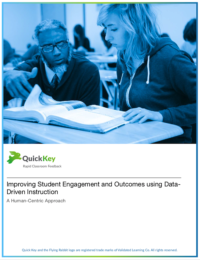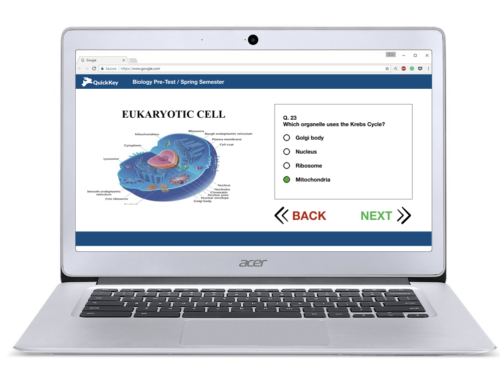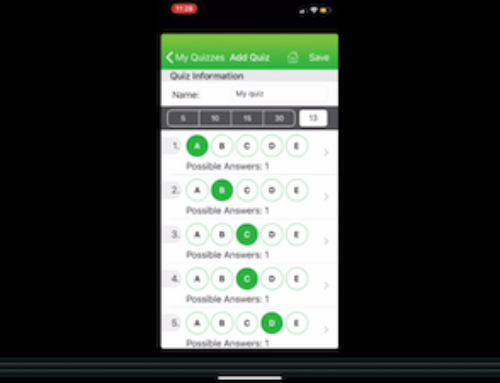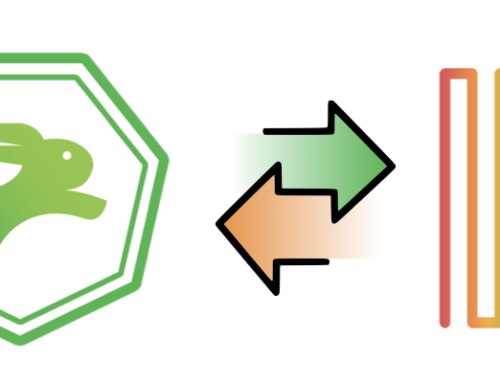This self-assessment checklist will get you thinking about everything that goes into a successful data program.
Data overload is not helpful. Technology is not a solution in itself. But using data effectively makes teachers, parents, students, staff, and the community happy and successful!
by Marlon Davis, Ed.M.
Marlon is a 2-time successful turnaround principal, district director, state education administrator, and leadership coach.
Using data is altogether different from having data.
Seems obvious. But school and district leaders who have succeeded in using data to improve student outcomes know that effectively using data involves much more than simply collecting data. Using data means changing a whole host of behaviors not just at the individual level, but also at the organizational level. It also takes planning and careful (and abundant) communication.
Before you spend that money on that shiny new data technology, ask yourself: “is my organization ready to use data to improve student outcomes?”
It is tempting to focus on data collection. After all, there is no shortage of vendors ready to sell you a new type of data, or a a way to collect data, or a dashboard to help you see all your data in one place, or do backflips with your data. But seeing data and doing backflips with data aren’t worth anything unless they are part of a system that measurably improves learning outcomes for students. So before you buy a new technology or make a big investment of time in collecting and reviewing data, ask yourself if your organization is ready to use the data to modify pedagogy and behavior.
Get the guide: The six easy steps to starting to use data to drive student engagement and outcomes in your district or school.
Top 10 questions you should ask yourself to gauge your readiness to effectively use data-driven instruction to improve student learning outcomes
10. What kinds of data do you collect?
Does your school or district get data from state tests? Do you use a benchmark or diagnostic test like the NWEA MAP? What about more frequent formative assessments like weekly quizzes or daily exit tickets? What about staff satisfaction and family engagement data? Are some teachers collecting these data, and others not so much?
9. How do teachers review the data collected?
Knowing when, where, and how teachers review the available data is step 1 in using data to inform and adjust instruction. Do your teachers review data as a group or on their own? Is the process different depending on whether the data come from the state test or from daily exit tickets? Do you know what all the different processes are?
8. How do you know whether teachers have reviewed the data in the way you expect?
Even when guidance and expectations around the review of data are clearly communicated, teachers may or may not be successful at following the guidance. Knowing whether or not teachers are reviewing the data – in the way you expect – is essential to knowing whether or not they are able to use the data to inform and adjust instruction.
7. What guidance is provided to teachers to help them interpret the data they review?
Just as we don’t expect students to know how to solve a problem or interpret information without teaching them how to do it effectively, we can’t assume faculty or staff are interpreting the data provided in a way that fits with our plan for using data. Even teachers and staff who have a high confidence in their own ability to interpret and use data may still need to align what they know with how to use data in the current environment and instructional plan. As yourself: what kind of training is there? Is there P.D.? A handbook? A data champion who can answer questions?
6. How do you know a teacher has interpreted the data correctly, and learned everything you expect them to learn from the data?
Knowing that a teacher has reviewed the data isn’t the same as knowing what they learned from it. There is so much to learn from any data set. But what are the most important takeaways from the data in your specific context? This isn’t information that “any good teacher should know.” Far from it. Every instructional plan that uses data should have very clear, written guidance on what information must be extracted from the data, and how that information should be used.
5. What action steps are taken by teachers after data are reviewed?
Once again, this is not something that teachers should be expected to “know” even if they are seasoned data-driven educators! Leadership can not leave the action steps up to the discretion of each individual teacher. Why? Because leaving it up to each teacher is not a plan, and there is no way to measure success or develop institutional excellence without a plan.
4. How do you know whether teachers have taken the expected action steps?
Any good plan contains measures that allow you to know if you are on track or not. When it comes to turning data into action that results in improved outcomes, you have to measure more than just the data. You have to plan action steps and you have to measure whether or not those action steps are being taken, and being taken effectively. Knowing whether or not action steps are being taken – and how effectively – will provide opportunities for improvement of the overall plan and also highlight areas where more training and help are needed.
3. Does your school and/or district invest in training teachers on using data to inform instruction? How and how often?
You can’t come up with a plan, communicate the plan, train faculty and staff, measure effectiveness of the plan, adjust the plan, or signal a commitment to data-driven instructional program without investments of time and budget. If the stated goal is to employ data-driven instruction, then both the district and the school should have dedicated time blocked out each week, and competent training, coaching, and professional development sessions booked and paid for each semester.
2. Do you know of any teachers in your school who are tracking individual students’ mastery of specific learning objectives or standards on a daily, weekly, or monthly basis?
Let’s assume for the moment that you are in the early stages of your data-driven instruction journey. A great place to start is with understanding how your existing data champions are successfully using data to inform and adapt their instruction. These data champions know how to use data within the existing curriculum, schedule, and other constraints of the current system. Since change is easiest when it is gradual and rooted in accepted norms, it pays to learn from these pioneering teachers (who can also help you lead change and help their colleagues).
1. Does your school support data use with technology tools to assist in collecting, interpreting, and using data?
Finally, YES technology aids are essential for collecting, interpreting, and using data. NO they are not sufficient. But in order for your data-driven instruction initiative to get off the ground and provide measurable improvements in student achievement, you’ll need the time-saving and number-crunching assistance of some modern technology. This doesn’t mean buying something new. What tools do you currently purchase? Are any of your existing data champions using this technology successfully? Start with that and see how far you can get. Only when you have everything else sorted out should you start looking for a technology that helps you achieve the goals you have laid out in your plan.
Want to learn more about how to prepare for success with data-driven instruction?
We have experts on hand who can help you make a rock solid plan, coach you on how to implement it, and train your teachers with high-quality professional development. Chat with us now.

About the Author
Marlon Davis is a school turnaround specialist who trains principals on leadership, parent involvement, change management, and data-driven instruction. A former teacher, school principal and charter school executive director in Cambridge, Massachusetts, Mr. Davis holds an M.Ed. in education leadership from the Harvard University Graduate School of Education.






